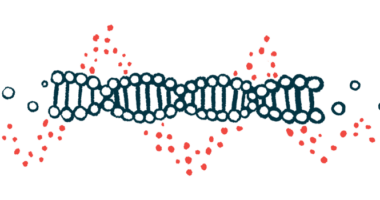New Gene Therapy Shows Potential for Safety, Efficacy in Mouse Model

A second-generation investigational gene therapy for spinal muscular atrophy (SMA) showed greater safety and efficacy than an earlier version, and it may be more effective than the currently approved gene therapy for SMA, a study in a disease mouse model reported.
The study was conducted by scientists with CANbridge Pharmaceuticals and the Horae Gene Therapy Center at the UMass Chan Medical School as part of an ongoing research agreement between the two organizations, CANbridge stated in a press release.
Findings will be in the poster “Endogenous Human SMN1 Promoter-driven Gene Replacement Improves the Efficacy and Safety of AAV9-mediated Gene Therapy for Spinal Muscular Atrophy in Mice,” presented at the ASGCT 25th Annual Meeting later this month (p. 127).
SMA is caused by mutations, usually in the SMN1 gene, leading to deficient production of the survival motor neuron (SMN) protein, which is involved in the health of nerve cells that control voluntary movements.
As a result, SMA symptoms include muscle weakness, limited mobility, and breathing and swallowing problems.
Approved disease treatments work to restore SMN levels, and include the gene therapy Zolgensma, marketed by Novartis. This treatment is packaged into a viral vector, or carrier, that delivers a healthy copy of SMN1 to cells, allowing them to produce their own SMN protein.
While Zolgensma is “a significant breakthrough for treating SMA,” it requires a high dose of the vector, which can lead to liver damage and hematologic (blood related) complications, the researchers noted.
To maximize the potential benefits of gene therapy while minimizing its side effects, the researchers developed a new gene therapy that they then optimized into a second-generation treatment. Its vector contained some differences from Zolgensma’s that the team thought would be beneficial.
Researchers compared this second-generation therapy with a therapy designed in ways similar to Zolgensma — called a benchmark therapy — in a mouse model of SMA and, briefly, in healthy mice.
A side-by-side comparison showed their experimental gene therapy led to lower accumulation in the liver of healthy mice compared with the benchmark, suggesting it may be safer and with lower toxicity.
Tests in SMA model mice also suggested that the new therapy may be more effective at treating disease symptoms, the researchers reported.
Specifically, SMA mice treated at high dose with this gene therapy survived for the entire 90-day study, while survival in those who received the Zolgensma-like therapy was a median of 60 days.
Mice treated at low or a high dose with the second-generation therapy also showed a faster righting response, a test of motor abilities that measures how well and quickly a mouse can flip from its back onto its feet, than did mice in the benchmark group, indicating better motor function.
A better restoration of neuromuscular junction structures was also evident in mice given the experimental gene therapy than the benchmark treatment, approaching that of healthy mice. The neuromuscular junction is the place where nerve cells and muscles meet to communicate, and is notably affected in SMA.
In the SMA mouse model, necrosis — tissue death — can be observed around the ears of some mice. Necrosis developed in 67% of benchmark-treated mice, 33% of the mice given the new gene therapy at low dose, and in no animals treated at high dose.
Female mice also gained a healthier body weight after the new treatment than after the benchmark treatment, while no weight differences were seen among male mice groups.
“In summary, our novel … gene therapy vector … has improved potency and safety profile as compared to the Zolgensma vector, holding promise for clinical applications,” the researchers wrote.








